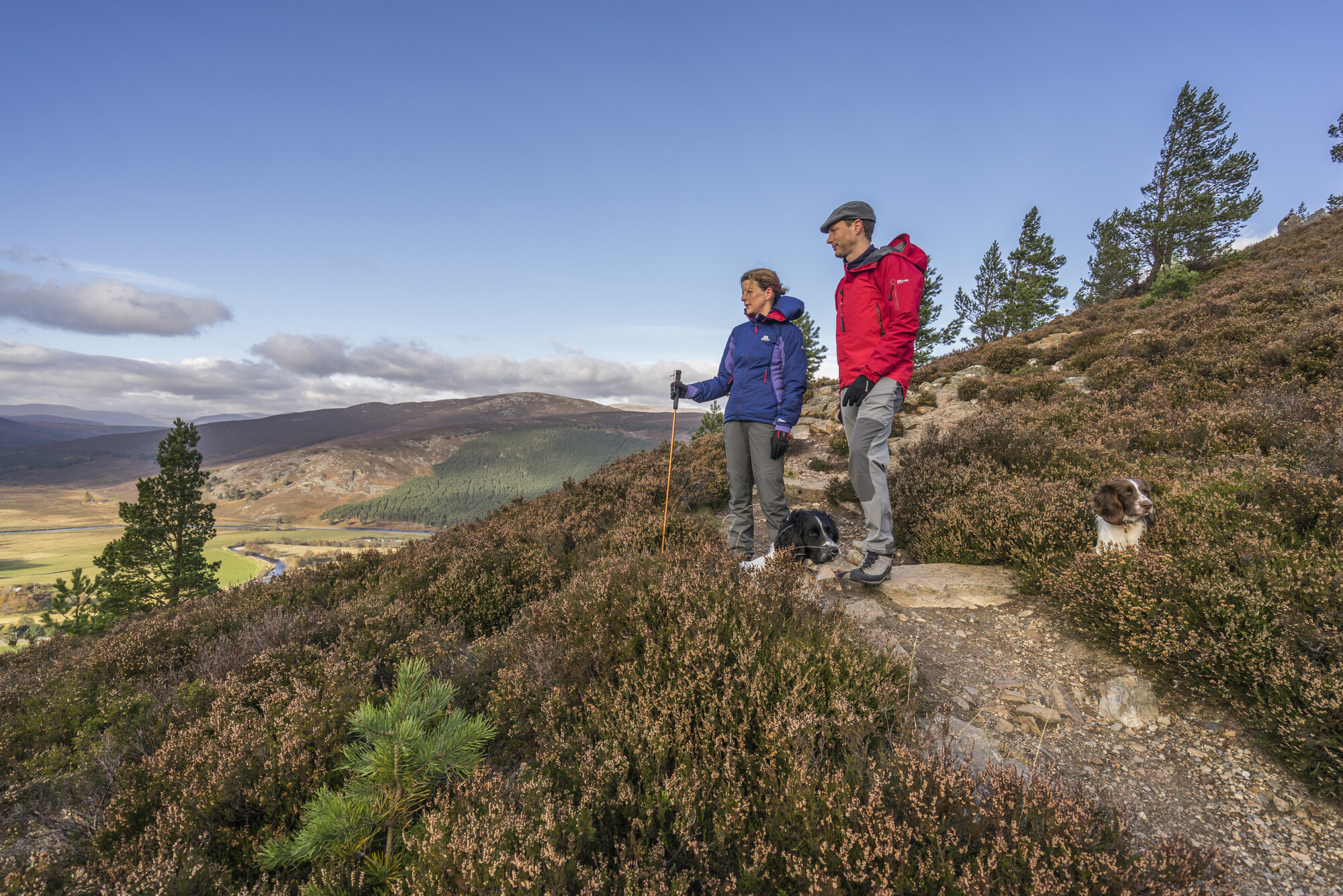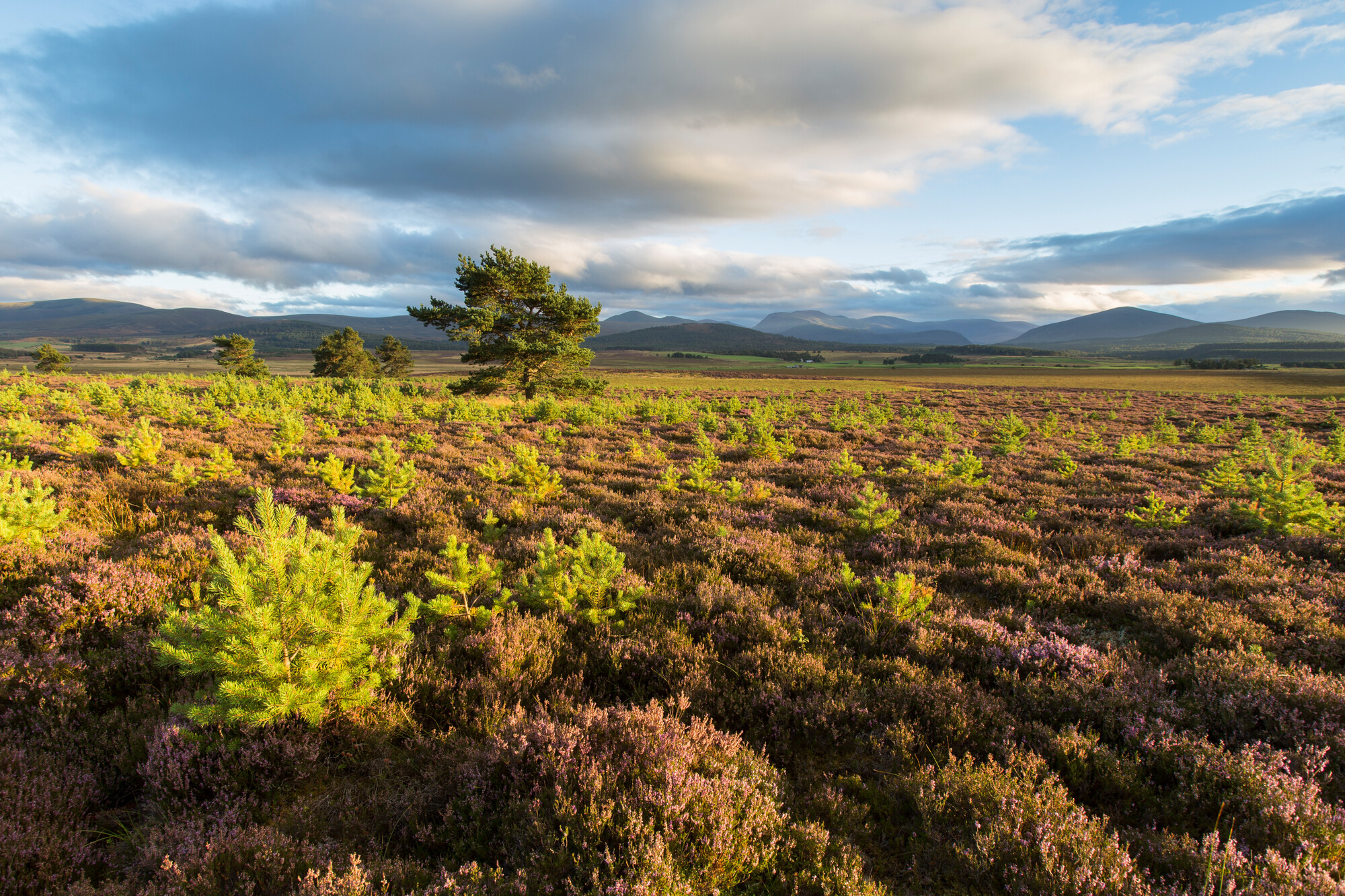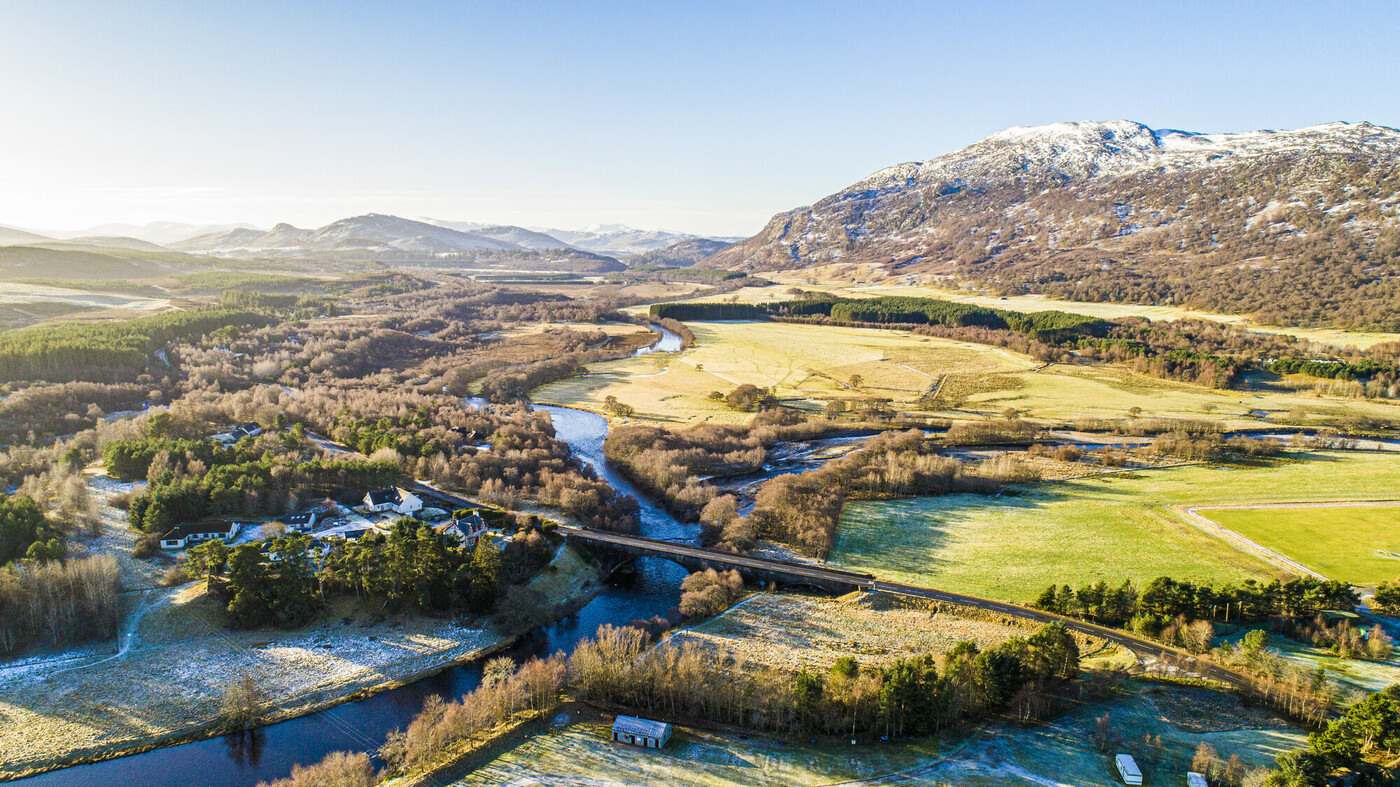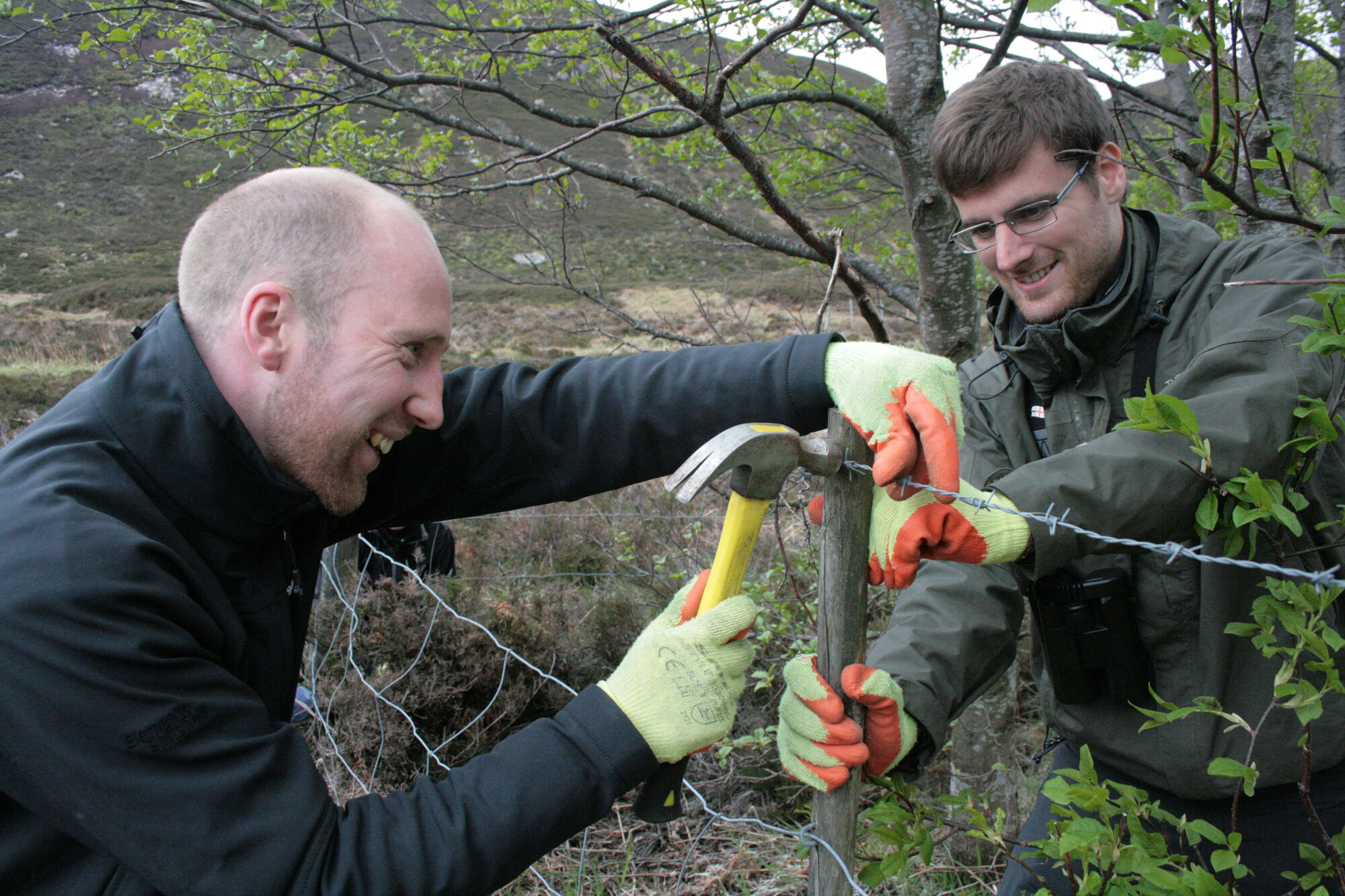Cairngorms Upland Advisory Group meeting notes - January 2025
Final CUAG minutes 16 Jan 2025:
Welcome: Attending: Pete Cosgrove, Hannah Grist, Grant Moir, Andy Ford, Colin McClean, Fiona Holmes (all Park Authority), Dave Windle (NE Mtn Trust), Graeme Taylor (NatureScot), lan Wilson (NFUS), Deirdre Steward (ADMG), Stephen Young (SLE), Stuart Smith (JHI), Will Anderston (ConFor), John Grierson (CLOAF), Leslie George (SGA), John Risby (SF), Peter Clark (BASC), Tim Kirkwood (Cairngorms Connect), Rory Kennedy (GWCT)
Apologies: Alison Hester, David Frew, Richard Gledson, Claire Smith.
Minutes of previous meeting: Note: a discussion was started about the previous meeting agenda item of Cairngorms Nature Action Plan (CNAP), and how the new CNAP should be dealt with. This was picked up later in the agenda under the CNAP item.
Actions arising: Only action from last meeting was: the Park Authority to bring next draft CNAP to CUAG for input and advice. CNAP is on this agenda – see notes of discussion below.
Updates:
- New Agricultural Advisor in Park Authority
Malcolm Smith, from Auchernack Farm just South of Grantown, is the new Park Authority Agricultural Advisor. He will start the post in February 2025.
- Species Licensing review
Graeme Taylor from NatureScot gave a verbal update to the meeting on this work and then post- meeting sent in the following text summary to be included in these minutes:
In January of 2024 the Scottish Government committed to carrying out a review of NatureScot’s species licensing functions.
This review, commissioned by Scottish Ministers, will set out to:
- ensure that the law is being applied correctly and that lethal control is only licensed where the conditions required for such a licence are demonstrably being met
- assess the potential to apply the principle of full cost recovery to species licensing
- assess the potential to introduce a public register of licenses to improve transparency, bearing in mind data protection and safety of licence holders.
The conclusions will be subject to external review.
The review will be carried out in the context of the Better Regulation principles and the Scottish Regulators Code of Practice
Current update on progress with the Species Licensing Review:
- We [NatureScot] are currently working on final drafts of the Cost Recovery and Public Register sections of the review. These will be ready for external review at the end of January.
- We [NatureScot] are anticipating a final draft of the Lethal Control section of the review from Harper Macleod this month in advance of the deadline for external review.
- We [NatureScot]have completed initial stakeholder engagement to inform the review. A questionnaire was circulated directly to 30 key stakeholders, and also shared on our website. (I’ve attached a copy of the questionnaire in case this is helpful). Analysis of responses has been completed this week and will be included in the final report of the review.
- Some initial key points;
- 82% of respondents were opposed to the introduction of charges for licensing
- Seventy-nine percent of stakeholders in favour of cost recovery supported tiered charges
- Respondents emphasised the importance of science/evidence over emotion/public pressure within the licensing process for lethal control.
- 20% of respondents showed preference for general licences as a satisfactory alternative to individual licences for lethal control, with many suggesting their expansion
- In regard to a public register, key concerns from stakeholders included adherence to GDPR and protection of personal data, and the risk of interference from those opposed to licensed activity. Others noted that they would wish to be able to interrogate a register to see which licences were held in particular areas.
- [NatureScot] had particularly high response rates from the ‘Farming/Fisheries’ and ‘Estates/Gamekeepers’ sectors to the questionnaire.
- [NatureScot] are intending to follow up with some further stakeholder engagement regarding the outcomes of the review.
- Regarding the scope of the review, [Nature Scot] this was decided at SG/Ministerial level and is also affected by capacity and funding. [NatureScot] consider that the focus on the legal review of lethal control licensing encompasses an area of key concern.
- Review due date was end of Jan 24, will be tight to get finished by then.
A CUAG member questioned what the next steps would be for accepting or rejecting responses made by stakeholders and consultees? And were there any timescales for doing this? Nature Scot responded that the Species Licensing Review report will go to Scottish Ministers and what happens thereafter is up to Scottish Ministers.
- Park Authority budget
Update from Park Authority: Budget from ScotGov confirmed in December ‘24 as roughly the same as last year.
There is still a sizeable peatland restoration budget in place. Park Authority are waiting on community development related elements – not entirely sure of final figures yet. Park Authority won’t hear about Nature Restoration Funding until early February ‘25.
The Park Authority Board meeting in March ‘25 is where the Authority budget will be finally agreed.
The Climate Adaptation Fund offered by the Park Authority will be in place again for this year and Expressions of Interest are likely to open in February ‘25 so interested parties have more time than they did last year to bid.
Discussions:
- Cairngorms Nature Action Plan (CNAP)
Discussion around CNAP reporting from last CUAG meeting;
Some felt it was unrealistically positive and didn’t acknowledge continuing declines in some species.
Park Authority responded that within CNAP reporting it does list targets not met & species in decline.
Predator control and how this is approached was mentioned by some as key to addressing issues with some declining species.
Others pointed out that predator control is only one of several factors involved and shouldn’t be concentrated on to exclusion of all else.
The Park Authority noted the discussion and thus how important it is for the next CNAP (currently starting it’s development) that CUAG have a defined way to input and contribute. This would allow such issues to be considered from the start of the process not at the end.
Further discussion of CNAP; Aims of CNAP are to tackle twin crises and improve climate resilience.
Important that development of CNAP includes the right people and is hearing the right voices, but the steering group mustn’t duplicate membership or effort of CUAG.
It was suggested that an early draft CNAP should come to CUAG for discussion/edit before then going to Park Authority Board as a draft and then out to public consultation.
CUAG asked if this suggested approach is acceptable?
Some suggested the timetable is very tight to get CNAP drafted and to all the right people. Also that the CNAP steering group is too big to allow further meaningful discussion at this stage.
A wide-ranging discussion was held on the merits of action for priority species and functioning ecosystems. CUAG has a specific advisory role to the Park Authority and the group’s comments are welcomed and used to help inform planned actions.
ACTION Park Authority to take points made by CUAG back to CNAP steering group and CNAP development process.
- Integrated Wildfire Management Plan (IWMP) – advance draft for comment
A wide ranging discussion of latest draft was held and included the following topics:
Noted that within IWMP the onus, and ‘should’ language’, is all on land managers, but important to recognise where will support for implementation of the IWMP come from?
The Park Authority administered Climate Adaptation Fund will be available for funding bids for some fire management related items. Additional funding sources are likely to be required and that the Park Authority needs to recognise this.
ACTION Park Authority to look at some practical things that could contribute to fire management and could be (part) funded
Views expressed included putting more responsibility onto the land managers that have higher fuel loads. Others countered that there are lots of different ways to manage for fire risk, it’s not just about fuel loads.
Scottish Forestry representative noted that in terms of forestry grant scheme there is a requirement to have insurance against fire damage
Noted that mitigation of risk is the basis of the IWMP and both public and private resource costs are bound up in this.
A wide ranging discussion was had and the following key points noted: Different responses required for different land management activities. A one size fits all prescription is likely to be of limited value. The potential for collaborative fire training was discussed.
How should the role of estate tracks as fire breaks being considered? Can the existing policy on visual and landscape impacts with tracks be reconsidered for certain strategic fire breaks in light of the IWMP?
Reminder from Park Authority that the IWMP is about raising profile of issues and getting all land managers, regardless of approach, to think carefully about how to best manage an increased fire risk, using a variety of different approaches, in an ever-changing climate.
Are all the main audiences for IWMP information are included, visitor management for instance?
Park Authority highlighted that much has already been done on visitor side already, for instance there’s a £75k budget for comms related to the Fire Byelaw and Park Ranger service.
ACTION ensure IWMP also goes to those that manage visitors, not just those that manage land
- CNP Forestry Strategy 2018 — Supplementary Guidance note for comment
Introduction about Supplementary Guidance note;
Since the strategy was produced in 2018 a new park partnership plan has been published, land use policy has evolved and some common issues and learning have emerged,
Experience over last few years is that there are some areas where further guidance is needed to help interpretation of NPPP, CNPFS and SF approaches and aid the development and assessment of forestry proposals.
Important — the Supplementary Guidance note is not re-writing any existing guidance, just providing some extra clarification.
Scottish Forestry ran through the draft Supplementary Guidance note highlighting each topics.
Thereafter CUAG discussion included:
Further clarification sought on what is meant by ‘in-bye’ land because definitions can be important.
ACTION provide further clarity on definition ‘in-bye’ land in relation to the Supplementary Guidance note.
Post meeting note: Scottish Islands Agricultural Development Programme Regulations 1988 state:
“inbye land” means any land which is or has been enclosed or delineated by fences, dykes, hedges, etc. (including apportioned land) and which has been used for cultivation, production of forage or closely controlled grazing by stock;
Rural Payments and Services Scotland state: https://www.ruralpayments.org/topics/updates/guidance-archive/agri-environment-climate- scheme-management-options-archive/organic-description-of-land-categories-archived-13 – 09- 2017/
In-bye land
- ‘In-bye’ is that part of the farm which is used mainly for arable and grassland production and which is not hill and rough grazings
‘In-bye’ land has fields that are bounded by a fence, a dyke or a hedge
‘In-bye grassland’ will be conserved for winter feed (e.g. as hay or silage) or grazed by livestock
- ‘In-bye grassland’ will be either ‘improved’ or ‘unimproved. Both ‘improved grassland’ and ‘unimproved grassland’ are classified as ‘in-bye’
To classify as ‘in-bye’ clauses (1) and (2) must be satisfied and, where the land is managed for grassland production, clauses (3) and (4) must also be satisfied.
Please note that he ‘in-bye’ definition applies to that part of the farm where the bulk of the land is used for arable or grassland production. Uncultivated field corners and field margins (such as water margins and hedgerows) within this area are included as ‘in-bye!
Although ‘in-bye land’ has traditionally meant the enclosed grass and arable fields close to the house and steading and below the ‘hill or moorland dyke’, it is quite possible to have an area of ‘in-bye’ land above the ‘hill dyke’ (e.g. a tupping or bull park) – an enclosed area of improved or unimproved grassland once reclaimed from the hill, moorland or heath.
A brief discussion was held into what proportion of land within the National Park was under woodland and forestry cover versus open moorland:
What happens after all tree planting targets met? What happens next?
The current woodland targets are very challenging and not being met. Even if targets are met the Park Authority estimate that about 20% of park land area will be woodland or forestry so it will remain a predominately open landscape in the future.
Importance of wooded areas in the very long term is in habitat connectivity health. Current park strategy and grants targeted towards habitat connectivity (e.g. pinewoods and riparian corridors) rather than simple woodland area expansion.
Questions were asked around if the Supplementary Guidance deals adequately with issues of carbon sequestration/release, pathogens and pest risk?.
NOTE: The Supplementary Guidance is not a stand-alone document, it is selected points of clarification ONLY. All main guidance lies within NPPP and CNP Forestry Strategy, as well as from Scottish Forestry.
Suggested ACTION pick out only the items that have changed and remove or change pre-amble to help purpose of Supplementary Guidance, and that it’s not in place of NPPP or CNP Forestry Strategy, be clearer.
There was a question raised regarding conditioning the removal of deer fences and HIA changes over time? Agreed that this needs some addition clarification.
ACTION clarify section on deer fences in Supplementary Guidance.
A view raised that the section in Supplementary Guidance about tracks is contentious — is this noter just advisory? Shouldn’t the current Planning Circular be the definitive guidance?
ACTION clarify purpose of Supplementary Guidance note in relation to tracks.
AOB
- Stuart Smith – HIA methodology review
JHI are currently undertaking research project evaluating Herbivore Impact Assessment (HIA) methodologies commissioned by NatureScot. They have created an online survey which aima aiming to get feedback from people that carry out HIA methodologies in Scottish open hill rangeland as well as those that have analysed or interpreted the results from surveys.
The survey weblink is here https://hutton.qualtrics.com/jfe/form/SV_cwElzsnguGV7DWS
ACTION CUAG members with HIA experience please complete they survey and share with anyone you think might be interested in providing feedback on HIA methodologies.
Note: this only applies to open range HIA not woodland HIA
- Other
Ensure timing of future CUAG meetings fits in with stages of drafting CNAP and CNAP steering group meetings.
Question — are feral pigs included in CNAP? Not currently.
Discussion of Public Sector approach to feral pigs, and likelihood of them being widespread in the National Park soon.
END




